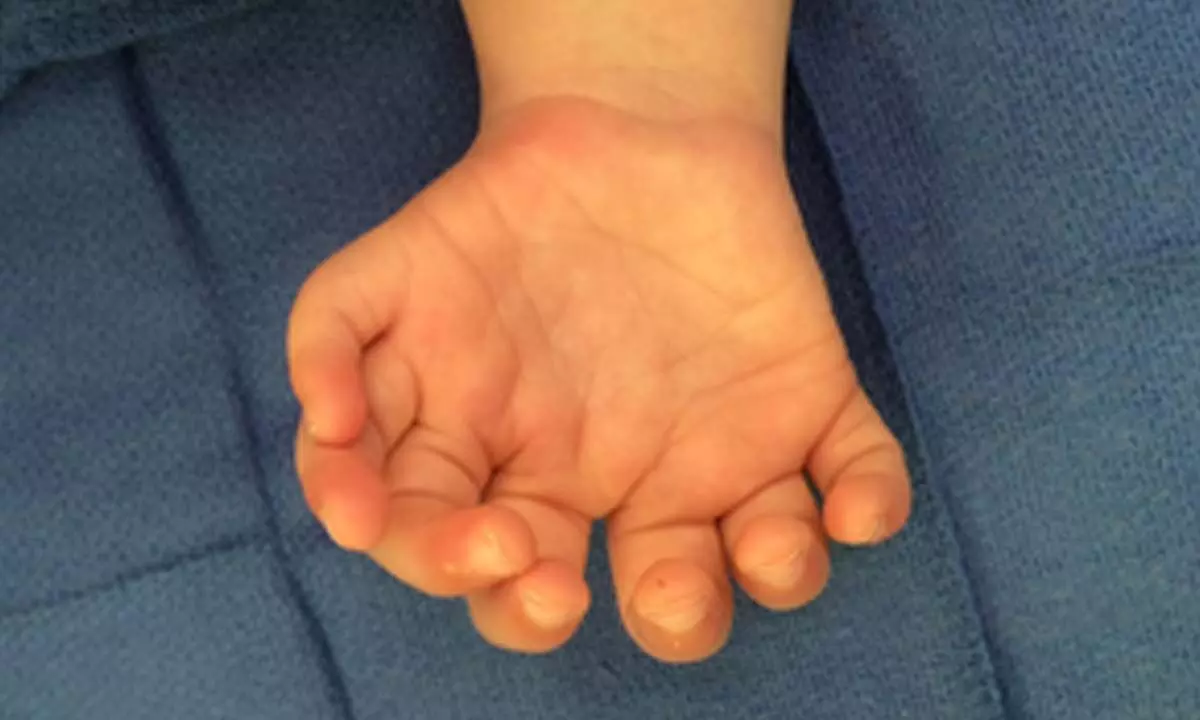Live
- Cops silence deafening noise of 100 bikes
- Guv inaugurates medical screening camp for Raj Bhavan staff
- Job fair for pharmacist roles tomorrow
- New ration cards to be issued in January
- Job mela at Masab Tank tomorrow
- New toilets facilitated for MPP school students
- Steps to safeguard natural springs gain momentum
- RWAs want officials to clear fog over SCB-GHMC merger
- Tanks, canals remain neglected despite execution of MGNREGS works
- BRS to celebrate Deeksha Diwas on Nov 29, Dec 9
Just In

Researchers have identified a rare disorder that causes babies to be born with extra fingers and toes and a range of birth defects.
London: Researchers have identified a rare disorder that causes babies to be born with extra fingers and toes and a range of birth defects.
The disorder, which has not yet been named, is caused by a genetic mutation in a gene called MAX. As well as extra digits -- polydactyly -- it leads to a range of symptoms relating to ongoing brain growth, such as autism, said the team from the University of Leeds, UK.
The research marks the first time this genetic link has been identified. It has also found a molecule that could potentially be used to treat some of the neurological symptoms and prevent any worsening of their condition.
However, more research is needed to test this molecule before it can be used as a treatment.
Published in The American Journal of Human Genetics, the study focuses on three individuals with a rare combination of physical traits, namely polydactyly, and a much larger than average head circumference -- known as macrocephaly.
The individuals share some other characteristics, including delayed development of their eyes which results in problems with their vision early in life.
The researchers compared the DNA of these individuals and found they all carried the shared genetic mutation causing their birth defects.
"Currently there are no treatments for these patients. This means that our research into rare conditions is not only important to help us understand them better, but also to identify potential ways to treat them,” said Dr James Poulter from the University of Leeds.
"In this case, we found a drug that is already in clinical trials for another disorder -- meaning we could fast-track this for these patients if our research finds the drug reverses some of the effects of the mutation.
"It also means that other patients with a similar combination of features can be tested to see if they have the same variant we have identified in our study," Dr Poulter said.
The study team has highlighted the importance of interdisciplinary research into rare diseases in giving understanding and hope of treatment to families who often face many years of uncertainty about their child's condition and prognosis.
"These are often under-represented conditions that have a huge impact on patients and their families. These families go through a long and complex diagnostic odyssey. The time from their first doctor's visit as babies to getting a diagnosis can take more than 10 years,” Dr Poulter said.
"It is important that these patients and their families discover the cause of their condition -- and if they can access a therapy based on their genetic diagnosis, that could be life-changing."
The researchers now plan to look for additional patients with mutations in MAX to better understand the disorder and investigate whether the potential treatment improves the symptoms caused by the mutation.

© 2024 Hyderabad Media House Limited/The Hans India. All rights reserved. Powered by hocalwire.com






